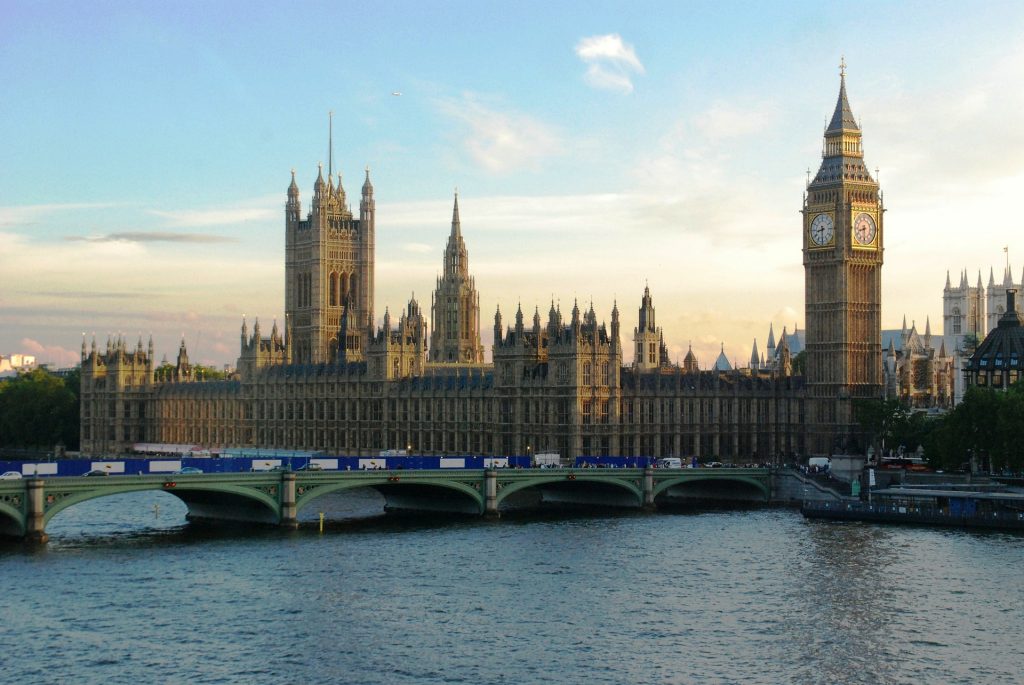
Commercial Awareness Update – W/C 11th July 2022
July 10, 2022
Clear the Lobby: What Laws are MPs voting on this week? W/C 18th July 2022
July 11, 2022Article by Ashlyne Yong
“Compelled to become instruments of war, to kill and be killed, child soldiers are forced to give violent expression to the hatreds of adults.” – Olara Otunnu
Child soldiers have always been a prevalent issue. Statistics have shown that about 250,000 children from at least 20 countries are caught in the vicious cycle of war and armed conflicts. As we step into the first quarter of the 21st century, with the desire to protect these children, must we blatantly accept the inevitable prevalence of child soldiers?
According to the United Nations Convention on the Rights of the Child, a child generally constitutes any individual below the age of 18. The job scope of child soldiers does not only cover combat fighting, some are also responsible for cooking, spying and sexual exploitation. On that account, child soldiering in its nature violates a myriad of human rights. These children are deprived of key services such as education and their lives are often on the line.
HOW ARE THE CHILDREN RECRUITED?
According to the US Department of State, the main medium of recruiting children is through abduction. The downturn of the economy and the rising social disruption are the driving force for child recruitment. Armed groups have no alternatives but to recruit children to boost their human resources. Recently, several photograph shots of Ukrainian children being taught to use a rifle have gone viral amid the conflict between Ukraine and Russia. Regardless, the severity of the situation, using children to fight forces is a complete violation of human rights.
The Sierra Leonean government and the Rebel United Front (RUF) are known for abducting and coercing children each year. Such brutal recruitment dates back to 1999, when about 4800 children were reported missing. It was later discovered that the RUF had forcibly recruited them into becoming soldiers and sex slaves. Countries like Sierra Leone have no proper education system and the ailing economy makes children more vulnerable to the coercion from the army.
It should also be noted that the recruitment of child soldiers includes voluntary involvement. The appalling socioeconomic factors such as poverty and separation of families are key factors correlated with voluntary recruitment. Children from families in dire straits often have a higher tendency of volunteering in armed conflicts. These children joined the army upon knowing the rewards and incentives that they would receive. For instance, in 2018, the UK Ministry of Defense encouraged the youths to join the army as it provides them better career prospects and other attractive opportunities. Nevertheless, the Defense Select Committee reminded the MOD to take into account the risk of recruits under 18 developing mental health conditions.
Many child soldiers are blinded by injustice and revenge for the death of their loved ones. They are also often found in terrorist groups such as al-Qaeda and ISIS. These groups propagandize the children to be long term investments as well as to preserve the extremist ideology. Children are easily influenced by the teachings as compared to adult soldiers because their childlike mentality will assume that it was a game. They do not analyze and judge critically as adults do, therefore, volunteering in the army may be deemed as a safer option than remaining as unarmed civilians.
PROBLEMS WITH THE PROTOCOLS
Among regimes of international law, the International Humanitarian Law is the main pioneer for the prohibition of the recruitment of child soldiers. However, due to the insufficient enforcement mechanisms within the International Humanitarian Law, many children were left in the dark without any legal protection.
Article 77 of Additional Protocol I requires States to take feasible measures to prevent children below the minimum age of 15 years from any direct participation in conflicts and hence preference will be given to older individuals. At first glance, this is pictured to be an effective measure in curbing the growing issue, however, the term “feasible measures” seems to stir up controversial discussions. “Feasible” means within the competency or the authority of the parties. Does that mean children are only protected when it is “feasible” to do so?
It is common knowledge that it is not always possible to implement safety measures and seeking alternative solutions is an onerous task. The feasibility of a certain measure is subjective and it depends on a given situation when determining what is necessary at that time. If one took an in-depth standpoint, it would mean if there was an on-going conflict, it would not be “feasible” to demobilize a child before military engagement. Consequently, this standard is not ideal. Realistically, the use of child soldiers can never be sustained even if all feasible actions were applied.
The Additional Protocol II has also made no mention that children under 15 years old are not to directly take part in armed conflicts, hence creating a sense of ambiguity in legal standards. Including the term “direct participation” leads to two schools of thoughts: narrowly interpreting it will corroborate that fewer children are potentially regarded as legitimate targets; the broad application will protect a large range of impacted children, especially girls who do not fall within the narrow interpretation.
“Recruitment” generally covers children who were forced to enter the army and it does not seem to prohibit any voluntary enlistment. Realistically, it is onerous to prohibit children from voluntarily enlisting into the army. If a child participates in conflicts voluntarily, it does not entirely mean that he or she was recruited unlawfully. With the uncertainties of the definition of “recruitment”, judges like Justice Robertson from Sam Hinga Norman case are in favor of substituting the term “conscription”, which covers involuntary labor.
INTERNATIONAL RESPONSES
United Kingdom
The United Kingdom is the only country in Europe that still allows 15 year olds to enlist and begin their training process at 16. However, the British army has made it mandatory for minors to seek consent from their parents before enlisting. Recruiters are not allowed to communicate with the children’s parents to ensure a genuinely voluntary recruitment process. The right to discharge child soldiers was expanded and children are allowed to leave the army provided a notice is submitted before they turn 18. This implementation has proven to be effective as there were no criminal records of child recruits trying to leave the army base illegally recently.
Democratic Republic of Congo
In an effort to curb the issue, Congo has undertaken measures to impede the use of child soldiers by removing them from the military and securing pledges from commanders in renouncing child recruitment. The newly revised Congolese military law prohibits recruitment of minors below the age of 18. The government has also signed an Action Plan to cease any child recruitment associated with the armed forces. The plan has laid down 4 concrete elements which include verification of children in armed forces ranks, providing support for victims, holding perpetrators accountable and establishing collaboration framework between the government and United Nations.
Yemen
The Countering the Recruitment & Use of Child Soldiers in Yemen Programme was an initiative to ameliorate child soldier recruitment and stabilize the security of targeted children through socio economic rehabilitation. It has also equipped about 200 youths with training methods such as adapting to the work environment, aspects of occupational safety, and how to assess the learners’ skills acquisition. This is beneficial as it enhances their interpersonal skills which they can apply in other job aspects rather than the armed forces.
It cannot be denied that there is a strong message to end child soldiering as it infringes the fundamental rights of a child. The advancement of international instruments to tackle the phenomenon of child soldiers demonstrates a venture to delineate childhood as a space free from violence. It is of great urgency for State parties and International committees to join hands in honoring the international concurrence to prevent child soldiering by reforming relevant legislations and policies. Meanwhile, impacted countries could initiate action plans that help safeguard children.





